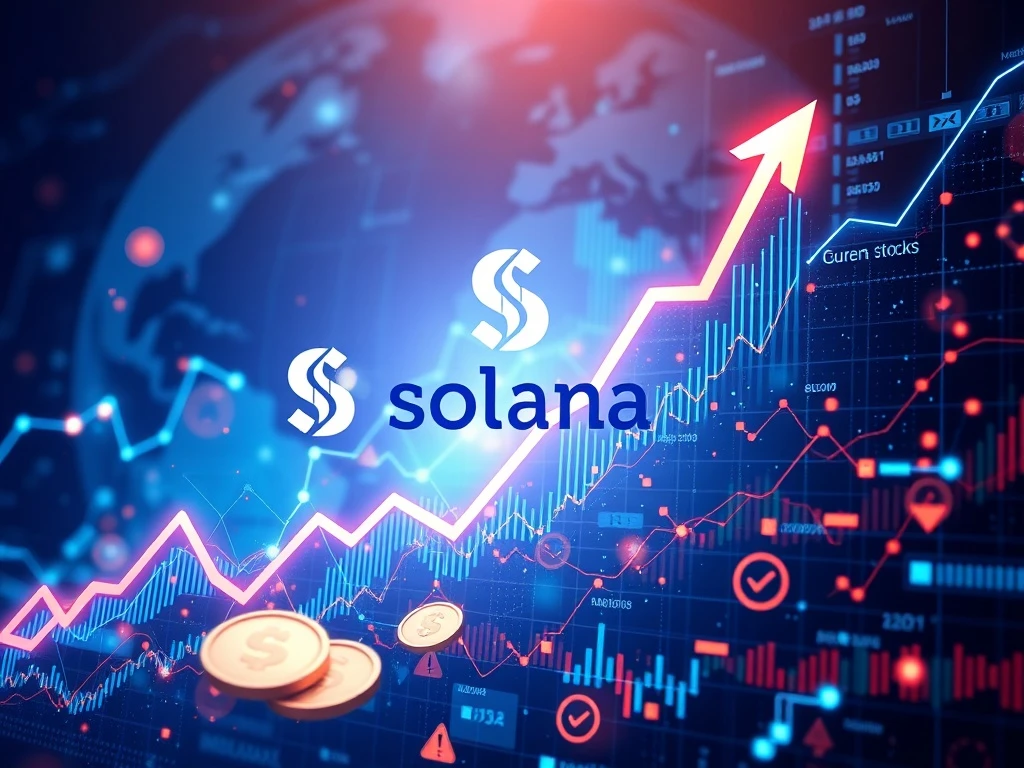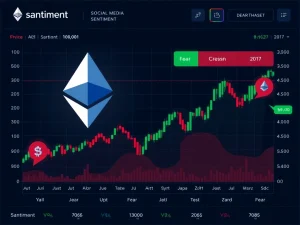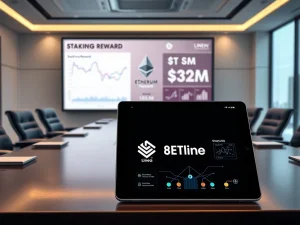Solana Tokenized Stocks Explode: A Deep Dive into Astonishing Growth and DeFi Challenges

Are you ready to witness a seismic shift in the world of digital assets? Solana has just made an astonishing move, with its tokenized stocks surging past the $100 million mark in record time. This rapid expansion is not just a number; it’s a clear signal of growing interest in merging traditional finance with blockchain technology. But what does this mean for the broader DeFi landscape, and are we truly harnessing the full potential of these innovative assets?
The Phenomenal Rise of Solana Tokenized Stocks
In a mere month since their June 30 launch, Solana-based tokenized stocks have achieved an impressive milestone, rocketing to a market capitalization of $102 million by July 22. This represents an incredible 242% increase from their initial $29.8 million valuation. This surge is largely attributed to the swift adoption of xStocks, a product issued by Backed Finance.
Solana has quickly established itself as a significant player in this emerging sector. It now commands 20.4% of the tokenized stock market, significantly outperforming Ethereum and its layer-2 counterparts (Arbitrum, Polygon, and Base), which collectively hold a comparatively modest $11.8 million.
Key performers driving this growth include:
- TSLAx (Tesla shares): Leading the pack with a $13.6 million market cap and over 11,000 holders.
- SPYx (S&P 500 derivatives): Following closely with $10.1 million.
- CRCLx (Circle’s tokenized shares): Valued at $9.1 million.
Beyond market capitalization, on-chain trading volume for xStocks has also soared, surpassing $300 million. This demonstrates a robust appetite for these new financial instruments.
Unlocking Potential: Challenges in DeFi Adoption
Despite the explosive growth in market cap and trading volume, the DeFi integration of these tokenized assets remains surprisingly underdeveloped. While platforms like Kamino and Raydium support xStocks for collateral or liquidity pools, their utilization rates are notably low. This presents a curious paradox: high interest in ownership, but low engagement in decentralized finance applications.
Consider these figures:
- Kamino: Holds $50 million in market value across eight xStocks (TSLAx, SPYx, NVDAx, HOODx, MSTRx, AAPLx, QQQx, and GOOGLx). However, only $585,000—a mere 1.1%—has been deposited as collateral.
- Raydium: Its largest TSLAx liquidity pool contains $1.1 million, but only $423,600 represents the tokenized stock. For SPYx, liquidity pools hold $1.9 million, with just $502,000 being the tokenized asset.
These figures translate to alarmingly low DeFi participation rates: 4.7% for TSLAx and 7% for SPYx. This underutilization suggests a significant untapped potential within the blockchain finance ecosystem.
Why the Gap in Crypto Market Cap Utilization?
Michael Cahill, CEO and co-founder of Douro Labs, offers insight into this discrepancy. He attributes the gap to a unidirectional flow of capital, primarily moving from crypto into traditional finance rather than the other way around. “Holders entering crypto from traditional markets aren’t yet leveraging DeFi composability,” Cahill explained to CryptoSlate.
He cites examples like the Apollo Diversified Credit Securitized Fund (ACRED), which, despite holding $100 million in net assets, has only a fraction deployed in on-chain lending. This points to a systemic underutilization where traditional finance users, while embracing tokenized assets, are not yet fully engaging with the composable nature of decentralized finance.
Cahill believes this is a phase, anticipating gradual growth as traditional finance users become more comfortable with blockchain tools. He highlights that xStocks represent a novel category, something that “we didn’t have this last year,” distinguishing them from earlier attempts like Terra’s Mmirror project. The path forward, according to Cahill, involves improved product experiences that seamlessly bridge traditional and on-chain interfaces, which will be crucial for unlocking broader DeFi integration.
The Future of Tokenized Assets on Solana
The impressive ascent of Solana tokenized stocks undeniably signals a burgeoning interest in blockchain-based financial products. It showcases the efficiency and speed of the Solana network in handling high-value assets and transactions. However, the true promise of these tokenized assets lies in their ability to integrate seamlessly with DeFi protocols, unlocking new levels of liquidity, collateralization, and yield generation.
For this potential to be fully realized, the industry needs to focus on:
- User Education: Helping traditional finance users understand the benefits and mechanics of DeFi.
- Seamless Interfaces: Developing intuitive platforms that make interacting with decentralized applications as straightforward as traditional financial services.
- Incentivization: Creating compelling reasons for holders of tokenized assets to participate in DeFi.
While a “big company moment” akin to MicroStrategy’s tokenized shares could accelerate adoption, the fundamental shift will come from making DeFi composability accessible and appealing to a wider audience. As investors navigate the evolving intersection of traditional and decentralized finance, the journey ahead for Solana’s tokenized stock market is one of immense potential, waiting to be fully unlocked.
Frequently Asked Questions (FAQs)
What are Solana tokenized stocks?
Solana tokenized stocks are digital representations of traditional company shares or financial instruments (like an S&P 500 derivative) issued on the Solana blockchain. They allow users to gain exposure to traditional assets within the crypto ecosystem, offering benefits like fractional ownership and 24/7 trading.
How quickly have Solana tokenized stocks grown?
In just one month since their launch on June 30, Solana tokenized stocks surged by 242%, growing from an initial valuation of $29.8 million to $102 million by July 22, 2025.
Why is DeFi integration for tokenized stocks still low?
Despite high market capitalization, DeFi integration is low because many holders of these tokenized assets are traditional finance users who are not yet familiar with or comfortable leveraging decentralized finance composability. Capital flow tends to be unidirectional, from crypto to traditional markets, rather than utilizing DeFi protocols for lending, borrowing, or liquidity provision.
What are the leading Solana tokenized stocks by market cap?
As of the recent data, TSLAx (representing Tesla shares) leads with a $13.6 million market cap, followed by SPYx (S&P 500 derivatives) at $10.1 million, and CRCLx (Circle’s tokenized shares) at $9.1 million.
What is the future outlook for tokenized assets on Solana?
The future outlook is promising, with anticipated gradual growth as traditional finance users become more accustomed to blockchain tools. Key factors for unlocking full potential include improved product experiences that bridge traditional and on-chain interfaces, enhanced user education on DeFi benefits, and incentives for deeper DeFi participation.
How does Solana’s tokenized stock market compare to Ethereum’s?
Solana has rapidly taken a dominant position, capturing 20.4% of the tokenized stock market with $102 million in market cap. In contrast, Ethereum and its layer-2 blockchains (Arbitrum, Polygon, Base) collectively hold a significantly smaller share at $11.8 million, indicating Solana’s current lead in this specific sector.








